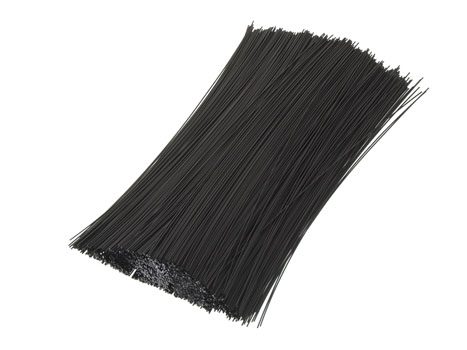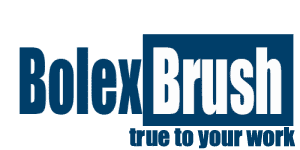How to choose a suitable brush? You should know about the brush filling materials first!
The most important part of the brush is the filament. Below is a partial list of what is available for the fill materials..
Filling material falls into basically three types:
1.Synthetic = Man made plastics
2.Natural = Hair, bristle or vegetable fiber
3.Wire = Strands of metallic filament
Synthetic Brush Materials

- Nylon: The most widely used and versatile fiber used today. Nylon is highly durable because of its high abrasion resistance and bend recovery. Nylon bristles discourage bacterial growth and resist most acids. It is non-shedding, and is excellent for cleaning and scrubbing applications with its strong abrasion resistance properties. It does not scratch most surfaces.
- Polypropylene: it is a popular synthetic filament used in a wide variety of applications. Like nylon, it is mainly manufactured in the CHINA . Its low specific gravity offers a low cost high performance fiber for wet or dry applications. Polypropylene has excellent stiffness when wet, is non-brittle, is inert to most solvents, oils, acids and chemicals, and is fungus resistant. Polypropylene will take a set much quicker than nylon will (not bend back to its original shape). Polypropylene has excellent stiffness when wet and is inert to most solvents, oils, acids or chemicals and is fungus resistance.
- Polyester : Used in some applications where it is exposed to sunlight or solvents. It has better abrasion resistance than polypropylene, but not as goods as nylon. It also has excellent bend recovery, excellent solvent resistance and excellent oxidation resistance at high temperature. The properties of polyester do not change significantly between wet and dry applications because it does not absorb much water.
Natural Brush Materials
- Horse hair : The hair from a horse’s mane or tail has a long tradition of usefulness. Horsehair is valued according to stiffness, length and color. It works well for sweeping polished surfaces, dusting, flux removal and general cleanup and is non-conductive.
- Bristle : The hair that comes from a member of the suidae family: hog, swine, pig sow or boar is called bristle. Bristle comes from along the back near the spine of these animals. Bristle is resilient and is the stiffest natural material available. A hog bristle brush will provide the best possible cleaning. It works well when dealing with tough sticky materials or viscous fluids. It is non conductive but will generate less static than synthetic materials.
Wire Brush Materials
- Stainless Steel : Is available in 3 types, #302, #304 and #316. These supply tensile strength, fatigue strength and high corrosion resistance. Stainless steel is used to prevent harmful ferrous deposits on brushed parts and is quite aggressive in larger diameters.
- Steel Wire : Carbon steel wire is available in high carbon and low carbon depending on your application. Carbon steel wire is used where stainless steel wire or higher cost is not needed. Steel wire can be very aggressive.
- Brass wire . This wire is 70% copper and 30% zinc. we uses only the highest quality brass, which is highly conductive and corrosive resistant and non-sparking. This wire is used in the manufacture of all brass brushes.



Leave a Reply
Want to join the discussion?Feel free to contribute!